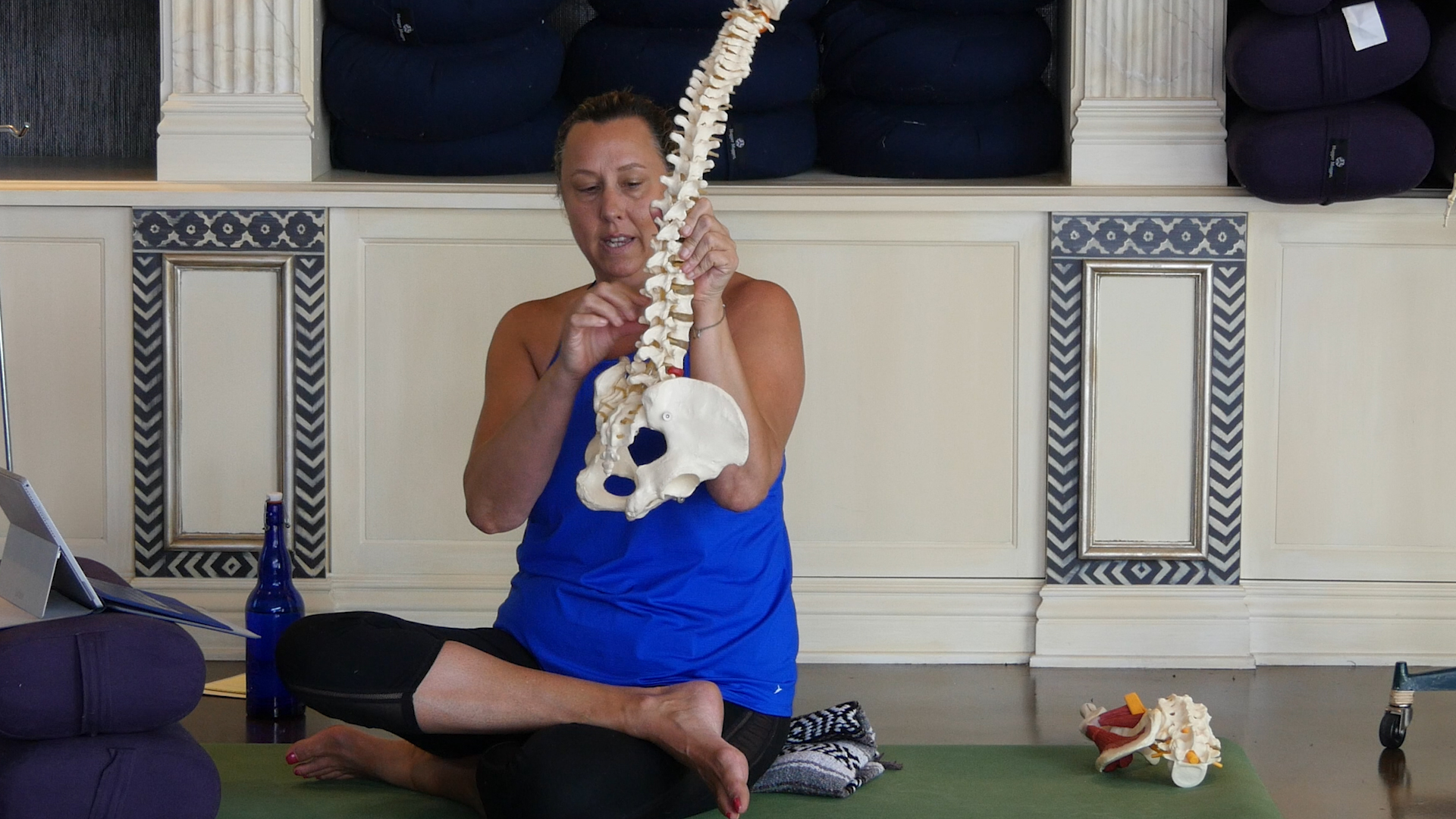Why are Warrior poses not necessarily easy or appropriate for students with SI Joint issues or low back pain or disc damage?
Question
Why are Warrior poses not necessarily easy or appropriate for students with SI Joint issues or low back pain or disc damage?

Answer from Justine
I’m gonna break this down a bit…..Warrior 1 is an asymmetrical back bend, and with one leg forward and one leg back it puts sheer stress on the SI joints – so if someone is in acute pain in either SI joint it should be avoided. If they aren’t acute, then they could modify by having a shorter stance from front to back- to limit the nutation and counter nutation of each SI joint – as well as hip width alignment in the feet. Warrior I may not be bad at all for someone with back pain, depending on the cause, and it can be very beneficial due to the stretch it can provide for the psoas on the back leg. Warrior I is difficult for people with spinal stenosis as it is a back bend (which can trigger nerve compression and possibly cause a spasm, back bends also decrease the size of the spinal canal by up to 63%, in people with central spinal stenosis they are already compromised and this can create more pain and compression around the cauda equina portion of the spinal cord) – this can be modified by pushing the chest forward to limit the amount of back bend/extension in the lumbar spine.
As far as disc damage and Warrior 1 – it depends. The back bend may help the disc retract (a prone back bend is much more efficient), but if there is acute pain or a pinched nerve involved it should be avoided……pain can be the guide here. Due to the similar alignment in Warrior III, the precautions would be similar – most risky in this pose would be SI joint instability. As far as Warrior II, it can trigger SI joint issues. With other low back conditions, I would say that pain can be the guide…..and the pose can be modified by shortening the stance to see if that helps the practitioner. I hope this helps!

